Dyeing Reed 101 – Part III
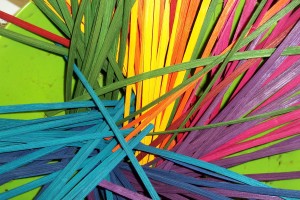 This post will wrap up my Dyeing Reed 101 series…
This post will wrap up my Dyeing Reed 101 series…
Today I am writing about the three types of dyes that work on reed and wood: direct, reactive and natural. Part I and II provided background for dyeing. If you haven’t read them you may find it helpful to start there. Dyeing Reed -Part I and Dyeing Reed Part II
REACTIVE DYES
Procion fiber reactive dyes work well on reed. They are very color fast and rarely bleed, and while reactive dyes do require some temperature control, they don’t require high temperatures. You can buy Fiber Reactive Procion Dyes from Dharma Trading Company, ProChemical and Dye, and Jacquard; my preference is Pro MX® from ProChemical and Dye.
While soak times, temperatures and amounts of dye powder, salt and soda ash will vary according to dye manufacturer, here is the basic procedure for using a fiber reactive dye:
- In a large pot (stainless steel, enamel or glass), add enough water [room
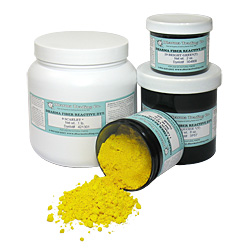 temperature (75°F – 95°F)] to cover reed and allow free movement. Soak reed for 10 – 30 minutes, then remove reed. Add new room temperature water to pot.
temperature (75°F – 95°F)] to cover reed and allow free movement. Soak reed for 10 – 30 minutes, then remove reed. Add new room temperature water to pot. - Dissolve dye in room temperature water. Add to water.
- Dissolve salt in hot (120°F – 140°F) water. Add to dye bath.
- Put the material into the dye bath and agitate (stir) frequently. Leave reed in dye bath 1 – 3 hours.
- Dissolve soda ash in hot (120°F – 140°F) water and add to dye bath slowly.
- Leave in dye bath for up to 2-12 more hours.
- Rinse under cold running water to remove excess dye and allow to dry.
- Optional: Make a fixative bath (see Dyeing Reed 101 – Part II) and soak reed for 20- 30 minutes
I like the color results of using a reactive dye, however, there are a few things I dislike: 1) the reed sits in the water for a long time, compromising reed quality. 2) I am not sure how to dispose of the leftover chemical ‘soup’. Pro Chemical and Dye would not say it was safe for septic systems and their safety sheets are a little scary.
For those of you who save dye – reactive dye is only good for one use.
Onion skins, spider wort, marigolds, blood root, bark, nuts even insects can provide a natural dye. Some of these dyes are very colorfast, others fade quickly. Some need to be gathered and dried, others can be used fresh. Just because a dye has a natural source does not mean it is non toxic, some natural dyes are very deadly.
Natural dyes are diverse, the best thing you can do is find a good book that will tell you which plants to collect, how to collect them, what colors they make and the recipes to use. Use the recipe for cotton or linen, but since reed does not dye easily, be sure to mordant reed before dying (see Dyeing Reed 101 – Part II)
These are two of my favorites books: The Modern Natural Dyer by Kristine Vejar and Wild Color: The Complete Guide to Making and Using Natural Dyes by Jenny Dean (If you are interested click on the title to view the book in Amazon.)
DIRECT DYES
Basket Tree Dye is a direct dye which is specially formulated for reed. Diazol® and Pro Chemical and Dye® make direct dyes. Direct dyes tend to not be very colorfast, however adding a surfactant and a dye fixative improve color fastness. Color depth is achieved by using high temperatures and leaving the fiber in the dye vat for a long time.
Again, while soak times, temperatures and amounts of dye powder, salt and surfacant and fixative will vary according to dye manufacturer, here is the basic procedure for using a direct dye:
- Use a stainless steel or enamel pot. Add warm water (enough to immerse reed).
- Add surfactant.
- Add dye powder.
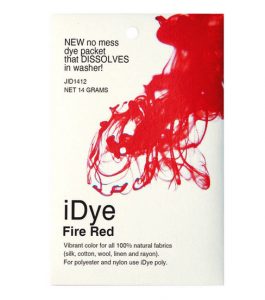
- Heat to boiling.
- Add reed.
- Return to boil
- Add salt. Let reed soak in dye bath for 20-30 minutes.
- Remove reed and rinse in cold water.
- Make a new bath with warm water and fixative, soak reed for 20 – 30 minutes. Remove reed, dry completely.
ALL PURPOSE DYES
An all purpose dye is a mixture of two types of dyes: acid dyes for animal or protein fibers and direct dye for plant or cellulose fibers. When used on reed, the direct dye adheres to the fiber and leaves the acid dye unused. Some professionals say that the acid dye in an all purpose dye may make reed brighter initially, but it does not add colorfastness.
The procedure for using an all purpose dye is the same as a direct dye (above), however almost all purpose dye formulas include surfactants and salt, so it is not necessary to add them.
Rit®, DEKA L® Hot Water Dyes, and Jacquard® iDye are all purpose dyes that will work with reed. Rit® is the most commonly used all purpose dye. I have used a lot of dyes, but I keep coming back to Rit®. (Click here to read the article I wrote about why I use Rit®.)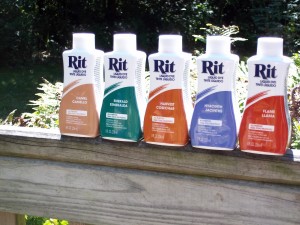
Direct dyes and all purpose dyes can be saved (refrigerate to discourage mold growth) and reused, however the dye becomes less effective with each use. Cold dye can be used for an over dye on a basket, but to get lasting color you must reheat the dye before using. As the dye is used up it provides a paler color; direct dye has a life, once the dye is spent, it is best discarded.
Personally, I have good results dyeing reed with Rit® using my method of heat and time. The well water I use has been softened and has a slightly elevated pH, so I don’t add any chemicals or even salt. To read more about how I dye reed, read my post, Dyeing – my way.
Okay – so that was a lot of information! I hope that you have found these posts helpful.
If you missed the other posts you can find them here
Dyeing Reed 101 – Part I and Dyeing Reed 101 – Part II

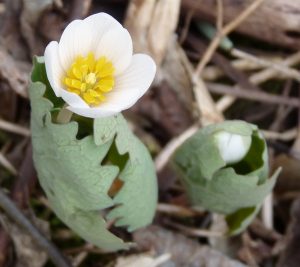
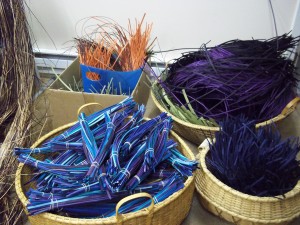


Thanks for all the info Annetta. Have a great time at Stowe!
Oh Mary it was wonderful – and I got to take a class! Can’t wait to tell you about it!
I just dyed some reed with Red Cherry Rit Dye. We have hard well water so I added some Borax to soften and some Baking Soda.
The color looked perfect when the reed was we,t but now that it has dried it looks a deep Rose color. Not the Bright Red Cherry I was hoping for.
What did I do wrong? Do you have any advice? In the past I have dyed Black and got a beautiful deep black color. Which, from what I understand,
is hard to achieve.
Judy, I would leave out the baking soda, the borax should be enough to neutralize the water.
The problem may have been that the reed needed more time in the dye bath. The reed should be a shade or two darker when wet than you actually want it. So, when the reed is in the dye pot and it is the perfect color, leave it in until it is a shade or two darker. Then when it dries it should be the color you want.
hope this helps!
I am interested in dying bass wood so that I can carve it. I am using thin strips so that I can glue together. The dye would need to penetrate into the wood so that the raw wood won’t show after carving. I have experimented with direct dyes. I’m thinking of heating the wood and then applying vacuum to replace any air with water inside the wood. Hopefully this would allow the dye to migrate deeper, especially with surfactant/salts present.
I am wondering if you have experience with vacuum or curving of wood. Also, is there a type of glue that you would recommend which could be carved without showing to much?
Sorry Richard I have no experience dying base wood.
Hi Annetta, I found your tips on the internet for colouring the reed. What a great explanation! I will try out your advices very soon and let you know how it ended up.
Mieke, I am so glad that you found them helpful. And it is always fun to see you on the teacher zoom calls 🙂 looking forward to meeting you in person at the NBO conference!
Thank you for these helpful tips! Do you have information about the toxicity of reed dye after it’s been dried and rinsed? I make foraging baskets that people will put food into, and I’m very concerned about this. Haven’t been able to find anything on the internet about whether the chemicals from dye will leach into the basket’s contents. Thank you for your help!
That’s a great question. While this does not specifically answer your question, I think you may find it helpful. This is from the Rit Dye website FAQ:
Is Rit suitable for infants?
For dyeing children’s clothing, Rit is entirely safe. According to the Consumer Product Safety Commission, Rit is non-toxic.
Is it possible to dye animal toys with Rit?
Rit is non-toxic and does not contain any potentially dangerous ingredients. However, because it is not a vegetable or food-grade dye, we do not suggest it for chewable toys.
Thank you so very much for sharing this information! It is written very succinctly and is very helpful. You have answered a lot of my dye questions!
I’m so glad you found this helpful!
Useful submit! I really want this sort of article.. that is very beneficial for me.